🌙








🌙
More Posts from Sharkspaceengine and Others
Solar System 10 Things: Spitzer Space Telescope

Our Spitzer Space Telescope is celebrating 15 years since its launch on August 25, 2003. This remarkable spacecraft has made discoveries its designers never even imagined, including some of the seven Earth-size planets of TRAPPIST-1. Here are some key facts about Spitzer:
1. Spitzer is one of our Great Observatories.

Our Great Observatory Program aimed to explore the universe with four large space telescopes, each specialized in viewing the universe in different wavelengths of light. The other Great Observatories are our Hubble Space Telescope, Chandra X-Ray Observatory, and Compton Gamma-Ray Observatory. By combining data from different kinds of telescopes, scientists can paint a fuller picture of our universe.
2. Spitzer operates in infrared light.

Infrared wavelengths of light, which primarily come from heat radiation, are too long to be seen with human eyes, but are important for exploring space — especially when it comes to getting information about something extremely far away. From turbulent clouds where stars are born to small asteroids close to Earth’s orbit, a wide range of phenomena can be studied in infrared light. Objects too faint or distant for optical telescopes to detect, hidden by dense clouds of space dust, can often be seen with Spitzer. In this way, Spitzer acts as an extension of human vision to explore the universe, near and far.
What’s more, Spitzer doesn’t have to contend with Earth’s atmosphere, daily temperature variations or day-night cycles, unlike ground-based telescopes. With a mirror less than 1 meter in diameter, Spitzer in space is more sensitive than even a 10-meter-diameter telescope on Earth.
3. Spitzer was the first spacecraft to fly in an Earth-trailing orbit.

Rather than circling Earth, as Hubble does, Spitzer orbits the Sun on almost the same path as Earth. But Spitzer moves slower than Earth, so the spacecraft drifts farther away from our planet each year.
This “Earth-trailing orbit” has many advantages. Being farther from Earth than a satellite, it receives less heat from our planet and enjoys a naturally cooler environment. Spitzer also benefits from a wider view of the sky by orbiting the Sun. While its field of view changes throughout the year, at any given time it can see about one-third of the sky. Our Kepler space telescope, famous for finding thousands of exoplanets – planets outside our solar system – also settled in an Earth-trailing orbit six years after Spitzer.
4. Spitzer began in a “cold mission.”

Spitzer has far outlived its initial requirement of 2.5 years. The Spitzer team calls the first 5.5 years “the cold mission” because the spacecraft’s instruments were deliberately cooled down during that time. Liquid helium coolant kept Spitzer’s instruments just a few degrees above absolute zero (which is minus 459 degrees Fahrenheit, or minus 273 degrees Celsius) in this first part of the mission.
5. The “warm mission” was still pretty cold.

Spitzer entered what was called the “warm mission” when the 360 liters of liquid helium coolant that was chilling its instruments ran out in May 2009.
At the “warm” temperature of minus 405 Fahrenheit, two of Spitzer’s instruments – the Infrared Spectrograph (IRS) and Multiband Imaging Photometer (MIPS) – stopped working. But two of the four detector arrays in the Infrared Array Camera (IRAC) persisted. These “channels” of the camera have driven Spitzer’s explorations since then.
6. Spitzer wasn’t designed to study exoplanets, but made huge strides in this area.

Exoplanet science was in its infancy in 2003 when Spitzer launched, so the mission’s first scientists and engineers had no idea it could observe planets beyond our solar system. But the telescope’s accurate star-targeting system and the ability to control unwanted changes in temperature have made it a useful tool for studying exoplanets. During the Spitzer mission, engineers have learned how to control the spacecraft’s pointing more precisely to find and characterize exoplanets, too.
Using what’s called the “transit method,” Spitzer can stare at a star and detect periodic dips in brightness that happen when a planet crosses a star’s face. In one of its most remarkable achievements, Spitzer discovered three of the TRAPPIST-1 planets and confirmed that the system has seven Earth-sized planets orbiting an ultra-cool dwarf star. Spitzer data also helped scientists determine that all seven planets are rocky, and made these the best-understood exoplanets to date.
Spitzer can also use a technique called microlensing to find planets closer to the center of our galaxy. When a star passes in front of another star, the gravity of the first star can act as a lens, making the light from the more distant star appear brighter. Scientists are using microlensing to look for a blip in that brightening, which could mean that the foreground star has a planet orbiting it. Microlensing could not have been done early in the mission when Spitzer was closer to Earth, but now that the spacecraft is farther away, it has a better chance of measuring these events.
7. Spitzer is a window into the distant past.

The spacecraft has observed and helped discover some of the most distant objects in the universe, helping scientists understand where we came from. Originally, Spitzer’s camera designers had hoped the spacecraft would detect galaxies about 12 billion light-years away. In fact, Spitzer has surpassed that, and can see even farther back in time – almost to the beginning of the universe. In collaboration with Hubble, Spitzer helped characterize the galaxy GN-z11 about 13.4 billion light-years away, whose light has been traveling since 400 million years after the big bang. It is the farthest galaxy known.
8. Spitzer discovered Saturn’s largest ring.

Everyone knows Saturn has distinctive rings, but did you know its largest ring was only discovered in 2009, thanks to Spitzer? Because this outer ring doesn’t reflect much visible light, Earth-based telescopes would have a hard time seeing it. But Spitzer saw the infrared glow from the cool dust in the ring. It begins 3.7 million miles (6 million kilometers) from Saturn and extends about 7.4 million miles (12 million kilometers) beyond that.
9. The “Beyond Phase” pushes Spitzer to new limits.

In 2016, Spitzer entered its “Beyond phase,” with a name reflecting how the spacecraft operates beyond its original scope.
As Spitzer floats away from Earth, its increasing distance presents communication challenges. Engineers must point Spitzer’s antenna at higher angles toward the Sun in order to talk to our planet, which exposes the spacecraft to more heat. At the same time, the spacecraft’s solar panels receive less sunlight because they point away from the Sun, putting more stress on the battery.
The team decided to override some autonomous safety systems so Spitzer could continue to operate in this riskier mode. But so far, the Beyond phase is going smoothly.
10. Spitzer paves the way for future infrared telescopes.

Spitzer has identified areas of further study for our upcoming James Webb Space Telescope, planned to launch in 2021. Webb will also explore the universe in infrared light, picking up where Spitzer eventually will leave off. With its enhanced ability to probe planetary atmospheres, Webb may reveal striking new details about exoplanets that Spitzer found. Distant galaxies unveiled by Spitzer together with other telescopes will also be observed in further detail by Webb. The space telescope we are planning after that, WFIRST, will also investigate long-standing mysteries by looking at infrared light. Scientists planning studies with future infrared telescopes will naturally build upon the pioneering legacy of Spitzer.
Read the web version of this week’s “Solar System: 10 Things to Know” article HERE.
Make sure to follow us on Tumblr for your regular dose of space: http://nasa.tumblr.com.




Pictures of the day - December 16, 2018
Insight A System - 3rd Planet (Insight A-III)
Insight A-III is the third planet orbiting Insight A. It is a hot Ice-giant orbiting it’s sun at an average distance of 0.12 AU. The planet’s atmosphere has a temperature of 960 F and it’s atmosphere lacks any type of define cloud decks. This is a helium ice giant, meaning that it has lost all of it’s hydrogen and the atmosphere is dominated by helium instead. As a result, the planet has a monochromatic color.
Insight A-III has a mass of 13.22 Earths, and a diameter of 4.03 times that of Earth. The planet is tidally locked to it’s sun and orbits the sun once every 14.76 Earth days.
High Resolution Pictures
Insight A-III
Lunar View
Asteroid Moon
Blinding Sun and Inner Planets

Image of Saturn taken by the Cassini spacecraft in 2007
Credit: NASA processed by Kevin M. Gill
Uranus Banned from Tumblr???

That’s right folks. Under the new Tumblr guidelines all forms of pornography are now banned from this site. That includes the solar system’s butthole. From this point forward I am not going to be able to post any pictures of the 7th planet from the sun, because the planet is not considered child safe.
When this shocking development became known, we asked other members of the solar system what they thought about the new ban.
Obviously the Lunar community was the first to respond, feeling they would be targeted next. The moon had this to say.
Luna: “Uranus banned? They better not ban me next or I am going to moon the shit about them.”
After Luna’s statement, the president of the lunar community (Ganymede) made the following statement. “The Lunar Community does not condone any acts of obscenity. I apologize for Luna’s statement, she was been in rehab lately for her moon rock addiction. She might be a little temperamental about this new ban.”
While most of the solar system community condemned Tumblr for its new ban, interesting enough there was one supporter of the ban.
Pluto of the dwarf planet community recently spoke in support of the ban. When asked why he supported the ban, Pluto has this to say.
Pluto: While everyone is busy dealing with this Tumblr banning Uranus fiasco, I can now spend my time focusing on getting my revenge against the other planets for booting me out of the planet club, and they will be too busy to even notice it. “Evil Laugh”
More news will be posted on this story as it becomes available.
Next up: Tumblr banning bunny butts? Rabbits in revolt!
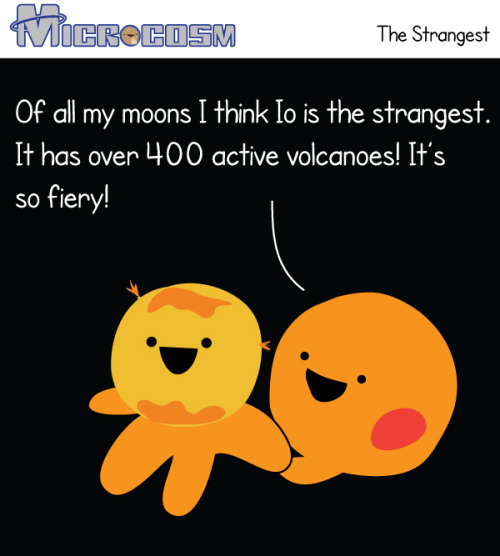
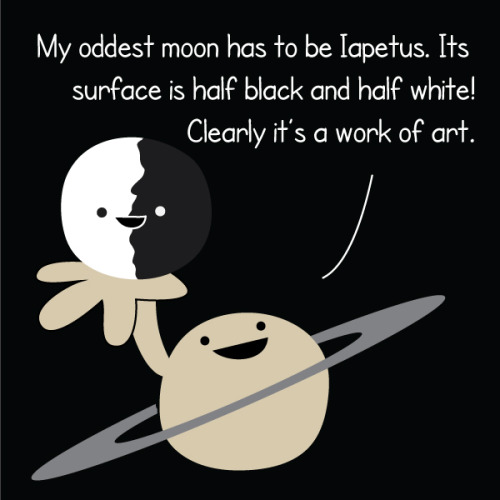

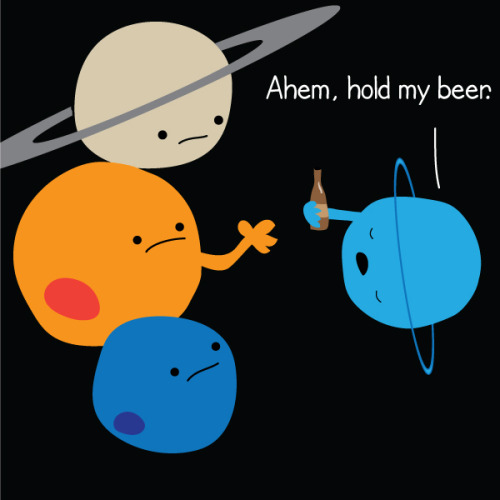
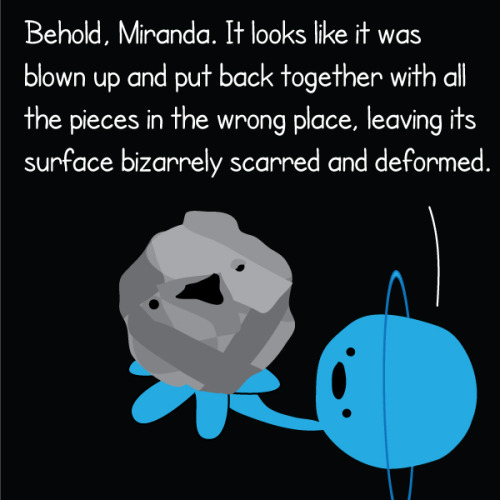
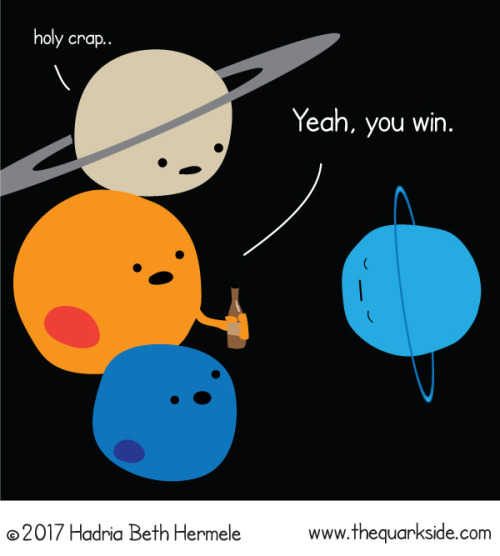
We really do have some weird moons in our solar system!









Pictures of the Day - November 7, 2018
Another Earth-Like world I have come across in the Large Magellanic Cloud Galaxy. This one has two moons and a rather cold surface with lots of ice covered mountains.
Space Engine System ID: RS 8475-2-6-170985-622 4
High Resolution Pics
From a distance
Closeup
Two moons
Icy Wasteland
Moonrises
Another double moon shot
The moons illuminating the night-side of the planet
Earth-rise
Earth and moon rise.

Picture of the Day - January 13, 2019
Aurora’s dance over the northern pole and a hazy world.

Picture of the day 2 - December 8, 2018.
The sun begins to set over a large lunar crater. Image from the surface of one of Insight B-VI’s smaller outer moons.
-
 oxymoronberlin liked this · 11 months ago
oxymoronberlin liked this · 11 months ago -
 clearblazedaze reblogged this · 11 months ago
clearblazedaze reblogged this · 11 months ago -
 noise-vs-signal liked this · 11 months ago
noise-vs-signal liked this · 11 months ago -
 blogtib liked this · 1 year ago
blogtib liked this · 1 year ago -
 clearblazedaze reblogged this · 1 year ago
clearblazedaze reblogged this · 1 year ago -
 bookish-embroidery-witch reblogged this · 1 year ago
bookish-embroidery-witch reblogged this · 1 year ago -
 a-child-of-chaos906 reblogged this · 1 year ago
a-child-of-chaos906 reblogged this · 1 year ago -
 sensei75 liked this · 1 year ago
sensei75 liked this · 1 year ago -
 persa-tra-i-miei-pensieri-bis reblogged this · 1 year ago
persa-tra-i-miei-pensieri-bis reblogged this · 1 year ago -
 persa-tra-i-miei-pensieri liked this · 1 year ago
persa-tra-i-miei-pensieri liked this · 1 year ago -
 anon-renaissance-man liked this · 3 years ago
anon-renaissance-man liked this · 3 years ago -
 vannila666 liked this · 3 years ago
vannila666 liked this · 3 years ago -
 juliedlnypict liked this · 3 years ago
juliedlnypict liked this · 3 years ago -
 ssahasrara reblogged this · 3 years ago
ssahasrara reblogged this · 3 years ago -
 xjemmanuel liked this · 3 years ago
xjemmanuel liked this · 3 years ago -
 enmiplaneta reblogged this · 3 years ago
enmiplaneta reblogged this · 3 years ago -
 enmiplaneta liked this · 3 years ago
enmiplaneta liked this · 3 years ago -
 coldfruit123 reblogged this · 3 years ago
coldfruit123 reblogged this · 3 years ago -
 coolcatdelicious liked this · 4 years ago
coolcatdelicious liked this · 4 years ago -
 mistborn-27 reblogged this · 4 years ago
mistborn-27 reblogged this · 4 years ago -
 mistborn-27 liked this · 4 years ago
mistborn-27 liked this · 4 years ago -
 leesbian42 liked this · 4 years ago
leesbian42 liked this · 4 years ago -
 durinsbride liked this · 4 years ago
durinsbride liked this · 4 years ago -
 purple-fairyy liked this · 4 years ago
purple-fairyy liked this · 4 years ago -
 beautifulrockmicrobiologyfriend liked this · 4 years ago
beautifulrockmicrobiologyfriend liked this · 4 years ago -
 idmrscr liked this · 4 years ago
idmrscr liked this · 4 years ago -
 handful-ofdust reblogged this · 4 years ago
handful-ofdust reblogged this · 4 years ago -
 insanityraven liked this · 4 years ago
insanityraven liked this · 4 years ago -
 andromedalone reblogged this · 4 years ago
andromedalone reblogged this · 4 years ago -
 andromedalone liked this · 4 years ago
andromedalone liked this · 4 years ago -
 arjunasearth reblogged this · 4 years ago
arjunasearth reblogged this · 4 years ago -
 analgesicsleep liked this · 4 years ago
analgesicsleep liked this · 4 years ago -
 profoundjudgesoulapricot liked this · 4 years ago
profoundjudgesoulapricot liked this · 4 years ago
My Space Engine Adventures, also any space related topic or news. www.spaceengine.org to download space engine. The game is free by the way. Please feel free to ask me anything, provide suggestions on systems to visit or post any space related topic.Check out my other blog https://bunsandsharks.tumblr.com for rabbit and shark blog.
294 posts

